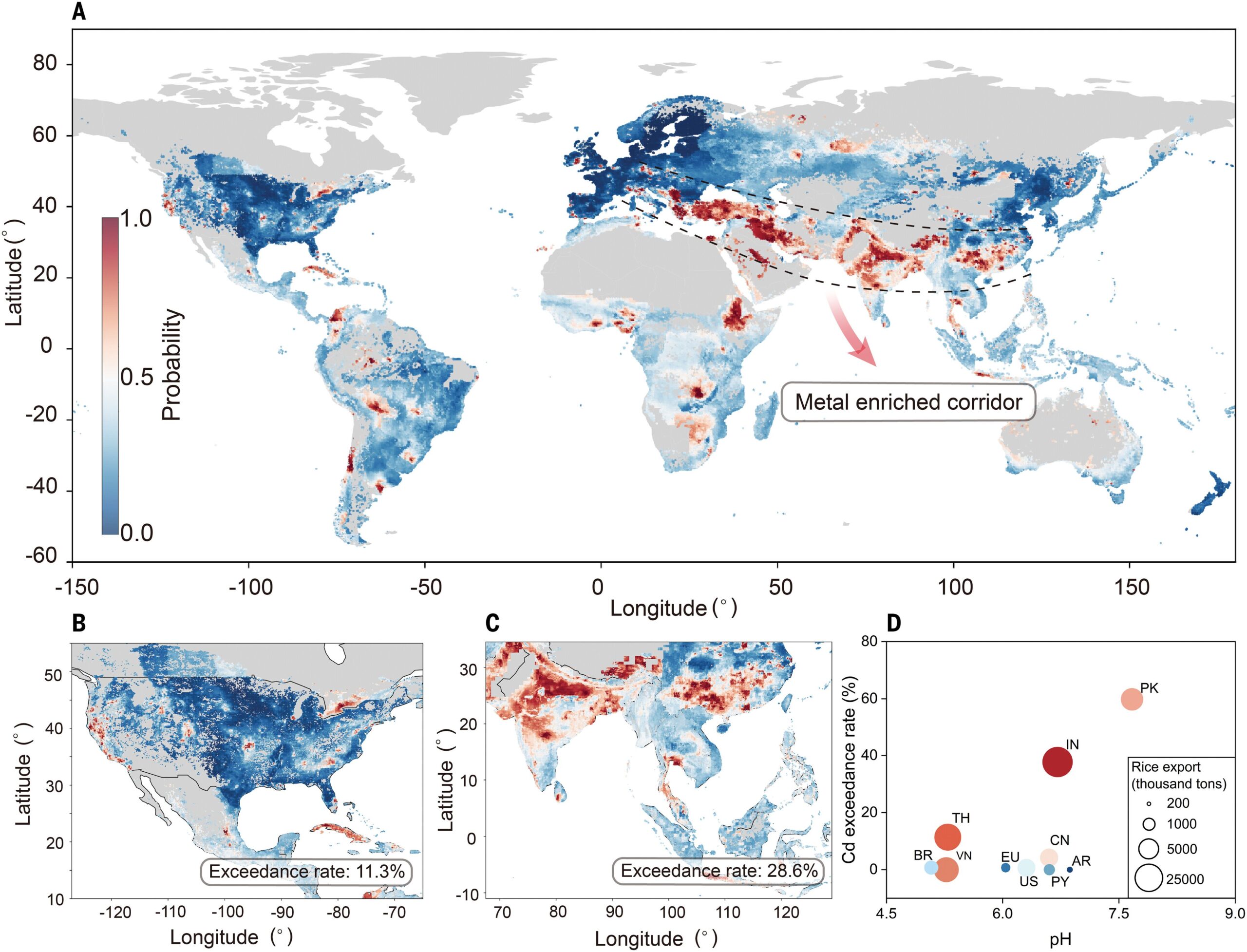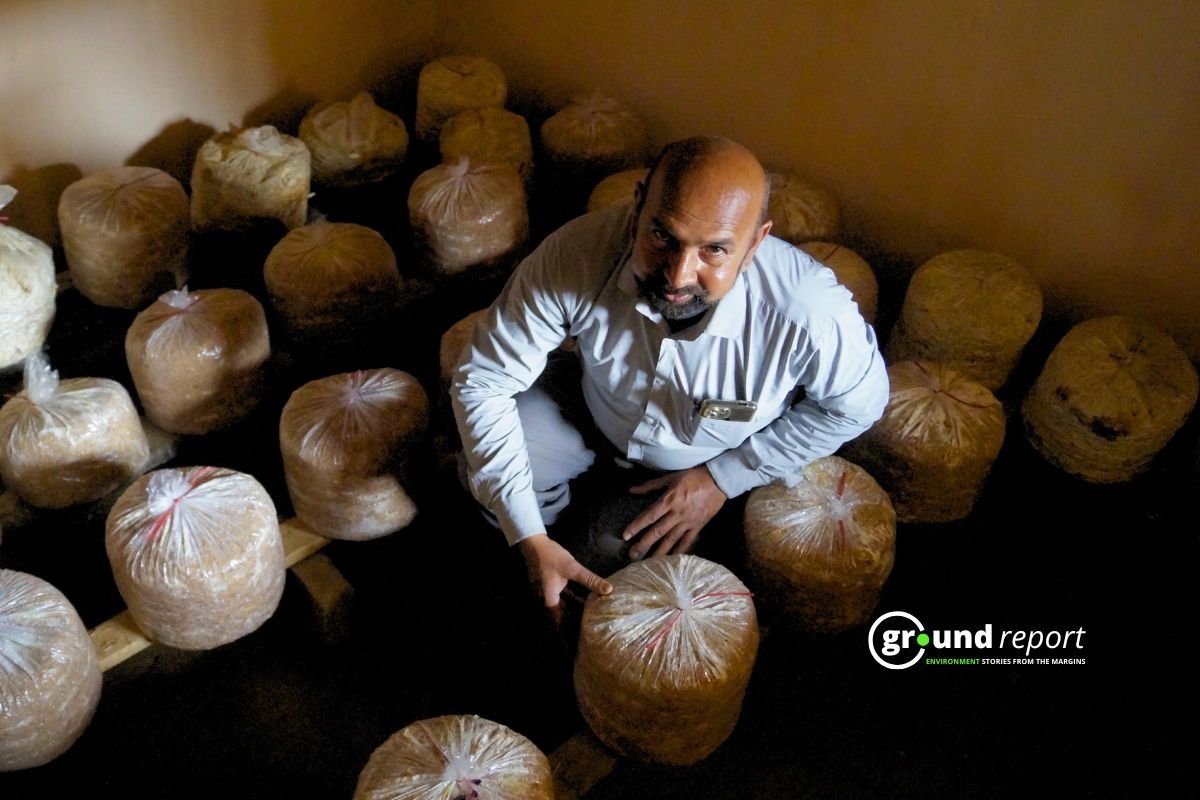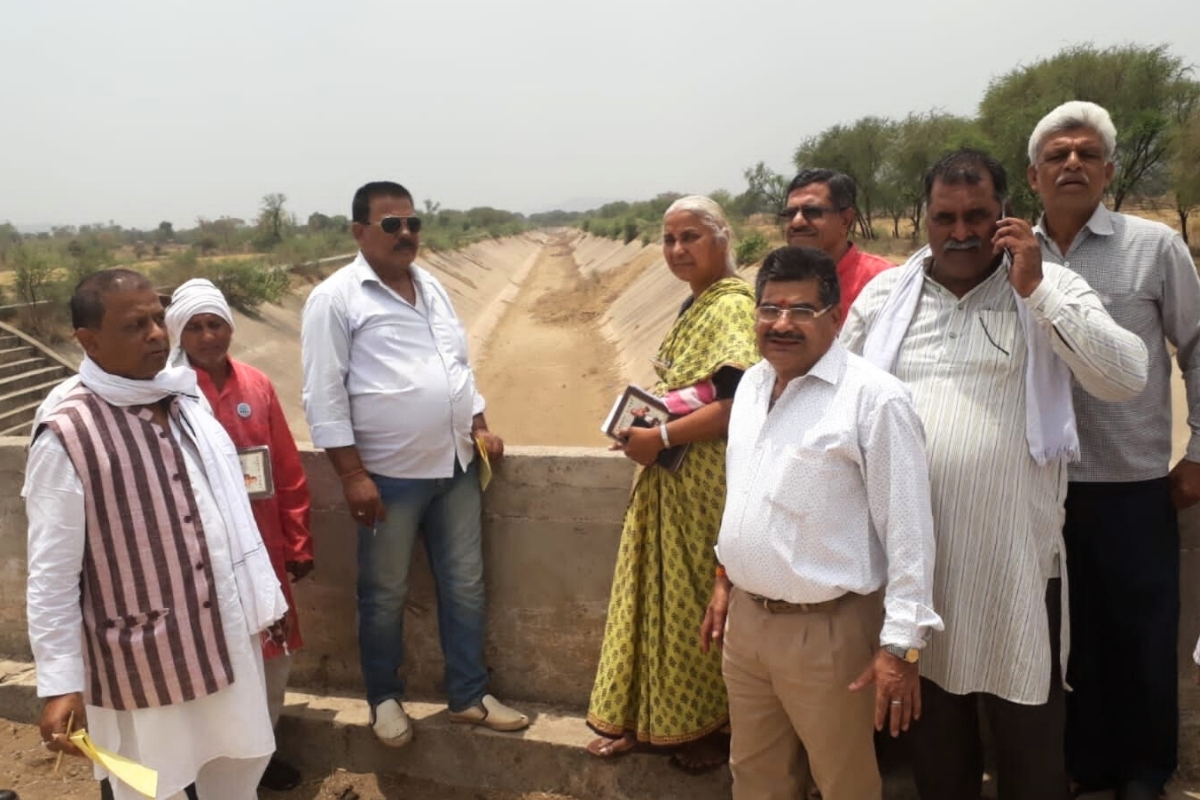A major new study warns that up to 17% of the world’s cultivated land is contaminated with at least one toxic heavy metal, posing a health risk to as many as 1.4 billion people. The research, published in the journal Science, is one of the most comprehensive global assessments of soil contamination ever conducted. It highlights the scale of a problem that often remains invisible beneath our food systems.
The study was led by Deyi Hou, an environmental scientist at Tsinghua University in China. His team conducted a meta-analysis using data from 1,493 prior studies, which included 796,084 individual soil samples. To ensure accuracy, the researchers filtered out data from deliberately polluted sites and used artificial intelligence to identify regions where metal concentrations exceeded recommended safety thresholds. They focused on seven heavy metals known to be toxic to humans, animals, and plants: arsenic, cadmium, cobalt, chromium, copper, nickel, and lead.
“Between 14% and 17% of the planet’s cultivable land is contaminated with at least one of these metals,” Hou said. “Based on the distribution of these contaminants, we estimate that between 900 million and 1.4 billion people live in high-risk zones.”
Heavy metal pollution can originate from both natural geological processes and human activity. Naturally, metals may be present in rocks and leach into the soil over time. But Hou’s team notes that human actions such as industrial waste discharge, mining, the overuse of fertilizers and pesticides, and irrigating crops with contaminated water are key contributors to elevated metal levels.
“Pollution by toxic metals is produced both by natural activities and those provoked by man,” the study explains.
How it happens
The research mapped global hotspots for contamination. In Europe, parts of southern Spain—including Andalucía, Asturias, the Canary Islands, and areas in central Spain—show elevated metal levels. The study identified a “metal-enriched corridor” running from southern Europe through the Middle East and into South Asia. These regions combine a long history of mining and industrial activity with ongoing agricultural use and limited environmental regulation.
The most common contaminant identified was cadmium, which often exceeds safe levels in agricultural soil. Long-term exposure to cadmium and other heavy metals like arsenic and lead has been linked to cancer, kidney disease, bone loss, and developmental disorders in children. The risk is especially high in regions where local diets depend on a single crop such as rice or wheat. “When a staple food is repeatedly grown in contaminated soil, the risk of toxic exposure increases dramatically,” the researchers noted.

In southeast Asia, rice fields are often irrigated with groundwater naturally rich in arsenic. That water deposits arsenic into the soil, which rice plants absorb. Recent studies show that iron minerals in the soil can sometimes transform arsenite, the more toxic form of arsenic, into arsenate, which is less harmful and binds more tightly to the soil. Still, this natural protective mechanism is not reliable or uniform.
In West Africa, particularly Burkina Faso, researchers have found arsenic contamination in both drinking and irrigation water. Wakene Negassa, a soil chemist at the James Hutton Institute, has worked with colleagues to develop a low-cost filtration method using zero-valent iron—essentially, iron nails. “These filters have shown promising results in removing arsenic from groundwater,” Negassa said.
Why does this matter?
In the Amazon region of South America, deforestation and small-scale gold mining are releasing mercury into the environment. Forests naturally absorb atmospheric mercury, but when trees are cut down and soil is disturbed, the stored mercury is released into nearby rivers and cropland. “Cropland near legacy mining sites often suffers long-term contamination,” Hou said. “But with the right technologies, these areas can be rehabilitated.”
Despite the scope of their work, the authors caution that the study may underestimate the true extent of the problem. “The real extent of global soil pollution could exceed that presented by the study, due to the limited availability of data and a probable underestimation,” Negassa added. In particular, data is lacking in several parts of Africa, limiting the ability to design tailored interventions.
The researchers say the findings should act as a wake-up call. “This study is a scientific alert to those responsible politicians and farmers to take immediate and necessary measures,” the authors wrote. They emphasized that this is not just a scientific problem, but a social and political one. “Soil contamination is not just a scientific issue. It’s a question of environmental justice,” the study notes. “The communities most affected are often the least responsible for the pollution.”
Addressing the issue will require multiple strategies. These include regular monitoring of soil and water, safer agricultural inputs, better regulation of industrial emissions, and low-cost filtration technologies. It’s also essential to give communities the information and tools they need to protect themselves. “Reducing exposure requires empowering communities with access to information and tools that enable them to farm safely,” the study concludes.
“Soils carry memory,” Hou said. “They record every pollutant, every neglected regulation, every decision to cut corners. But soils also hold the potential to heal—if given the proper support.”
The authors stress this is not a reason to panic but a call to action. “Food safety begins not in the kitchen or the market but in the ground beneath our feet,” they wrote. “No country should unknowingly export toxicity in its grain, nor should any farmer be left without the tools to grow food safely.”
Support us to keep independent environmental journalism alive in India.
Keep Reading
Can we talk about BT cotton, India’s only genetically modified crop
What is pesticide selling—protection from pests, and vulnerability to accidental poisoning
What is human cost of India’s pesticide consumption, and lack of regulations
Why does India use lower Pesticides per hectare of cropland than other countries?
Follow Ground Report on X, Instagram and Facebook for environmental and underreported stories from the margins. Give us feedback on our email id greport2018@gmail.com.
Don’t forget to Subscribe to our weekly newsletter, Join our community on WhatsApp, and Follow our YouTube Channel






